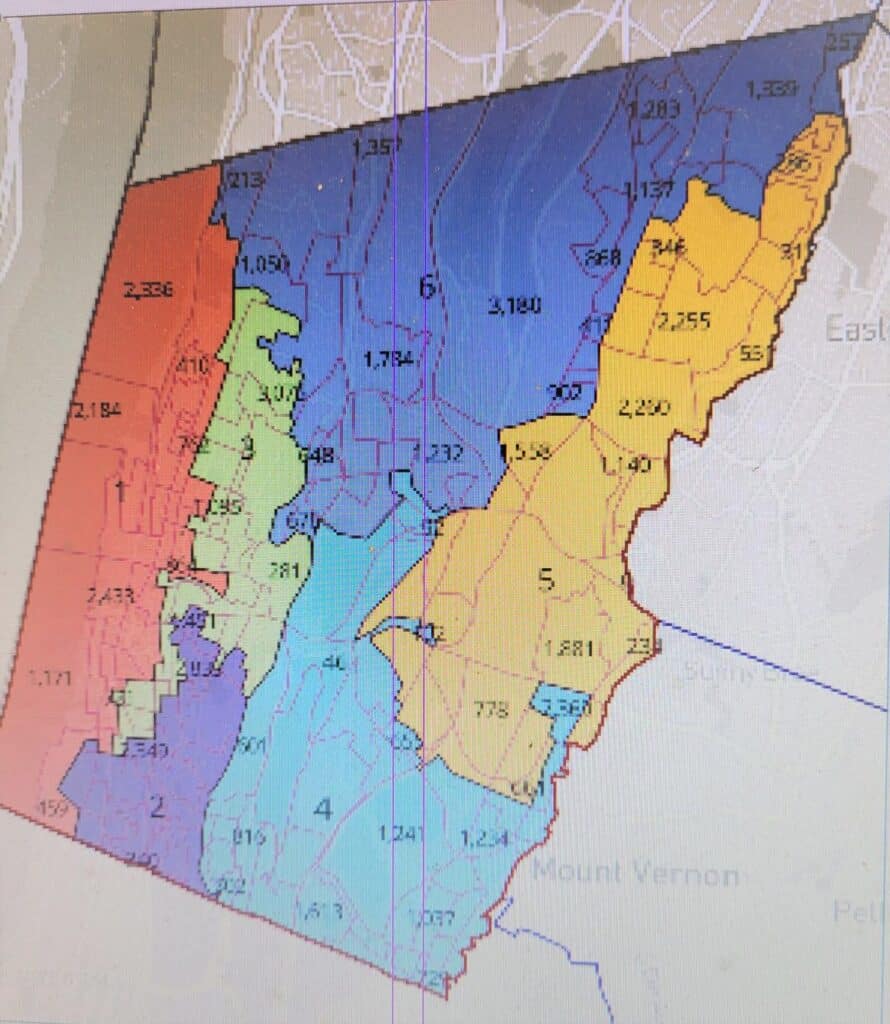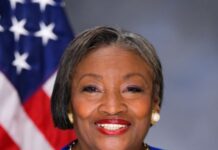
By Dan Murphy
Last week, we reported on the progress underway by the Yonkers City Council to redraw the six council districts, as mandated by law every ten years. After one public hearing, it was determined that the council, with the help of consultant Andrew Beveredge, would make amendments with a 2nd proposed redistricting map.
On Jan. 27, Yonkers City Council President Lakisha Collins-Bellamy said she opposes adopting the first proposed Yonkers redistricting map “We must allow the public an opportunity to observe and understand the redistricting process. The Council should hold at least one additional meeting where the public can view a revised map based on their interests and concerns. The City Council does have time to wait, and still pass a redistricting plan that meets the deadline in February,” said Collins-Bellamy.
“I want to thank everyone who attended the two recent town hall forums on the proposed new districts. They were a great example of participatory democracy,” said Collins-Bellamy, adding, “Democracy requires that elected leaders listen to what the people say. I’ve listened, and it’s clear we need more time to respond to the many thoughtful comments we have heard in the past several days from the voters.”
“Yonkers has grown a lot in the past decade, to the point that there is a fifteen percent population difference between some of the existing Council Districts,” said Collins-Bellamy, “That violates one person one vote, so redistricting has to happen. But it must happen in a way that people think is fair and transparent, and right now we don’t have enough time to respond to the many questions that have been raised and still meet the political calendar for the nominating process. So the only fair thing to do is put the process on hold, spend more time talking with the public, and then adopt a map that people can agree is fair to everyone.”
Collins-Bellamy said that the growth in the City’s population, which has vaulted it to the third largest city in the state, resulted in a redistricting that necessitated more extensive changes than usual. She noted that the population growth has been disproportionate throughout the City, which meant that to comply with the law, significant changes are required to ensure that the total deviation citywide could be at most five percent, as required under State law.
“This meant that minor adjustments, which may have occurred in the past, aren’t enough to comply with the law,” she said, “There have to be some significant changes, but that requires we make maximum effort to discuss those changes with the voters who find themselves moved between districts. The only way to ensure those discussions take place is to put the vote on hold and use the time to respond to people’s questions,” said Collins-Bellamy.
As a result, another Town Hall was held on Jan. 25 at the Will Library, and another public hearing in the Council Chambers on Feb. 1. Council President Collins-Bellamy said at the Feb. 1 hearing that the new council maps will be finalized on Friday Feb. 3, so that the Council can call a special meeting on Feb. 10 to vote on the new maps.
All of the public hearings can be viewed at the Council President’s Facebook page-/www.facebook.com/YonkersCCP.
Now that the lines have been modified, it is expected that the City Council will vote 5-2 for the new lines. Councilman Anthony Merante is still not happy with the way in which his district was redrawn. Council Minority Leader Mike Breen may also be a no vote. Some of the controversy regarding Breen’s district was erased when republican and former council President candidate Ron Matten, who was in the 5th district, then moved to the 4th, is now back in the 5th district.Council President Collins-Bellamy explained that the increase in development on the west side of Yonkers has resulted in an increased population, and the need to redraw the districts and specifically the east side districts of Merante and Breen.
While some are still critical of this process, it is being accomplished in the way that political lines are always redrawn. Once the Council President put the brakes on the process, negotiations were held between councilmembers and a second proposal was made.
That is called political compromise, and with 5 democrats on the council, there is only so much compromise that republicans can accomplish. The Council President also demonstrated the power of her office, which she used in this instance.
Several residents spoke out at the forums and meetings expressing their concern about being moved into another district or having their community split into two districts. The reality of their concerns, while legitimate, is that in a City of 200,000 people, under a redistricting plan, not everyone will be happy.




